Making Easier-to-Use Products
Making Easier-to-Use Products
Practicing User-Centered Design
Sharp practices user-centered design (UCD) in order to provide products that customers find easier to use.
The aim of UCD is to provide products and services that satisfy customers by seeing things from their perspective. Sharp studies exactly what makes products easier to use and incorporates this into product design. The UCD concept is outlined in the international ISO 9241-210 standard. Sharp has its own UCD Basic Policy and the Eight Principles of UCD based on this concept and shares them across the Sharp Group. Sharp investigates customers’ latent dissatisfaction and needs as part of its product development process and reflects those findings in the specifications and design of its products. By repeatedly going through evaluations and improvements, Sharp is bringing forth products and services that customers find easy to use and attractive.
Flow of Customer-Oriented Manufacturing

Customer-Oriented Manufacturing
In user-centered design (UCD), Sharp collects customer feedback on ease of use through various methods and applies it to product design.
Through usability tests*, questionnaires, interviews, and opinions gathered from customers during Customer Assistance Center phone calls and repair visits, anonymous information from customers is compiled and shared among Sharp development personnel, who put it to use in new product design.
In support of these activities, Sharp has established a usability engineering training program (beginners to advanced levels) to raise employees’ awareness of the importance of product usability and provide a practical, specialized curriculum that ensures they continue to maintain and improve their skills and motivation.
- Tests that involve observing how people use Sharp products and services.
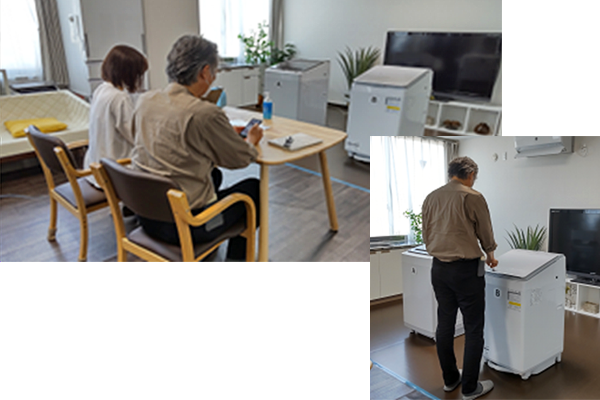
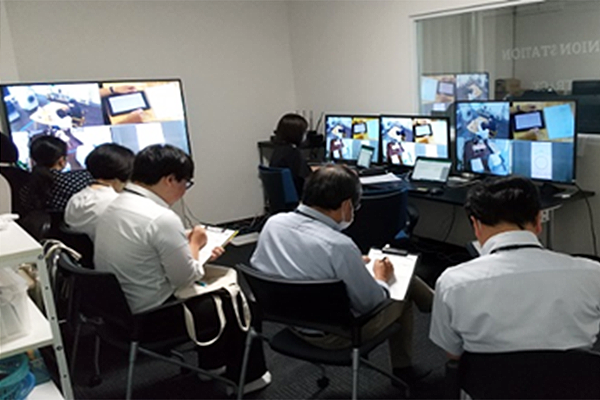
Comments from Participants in Usability Tests
- Because the usability test was conducted at the early stage of development, we were able to share the test results with everyone involved and proceed with the development of the next product model. (Sharp product planning staff member)
- We were able to identify a variety of issues that we were not aware of during our usual planning and development. By repeating a cycle of tests and improvements, we hope to create even better services. (Sharp product planning staff member)
Efforts in Accessibility and Universal Design
In line with the UCD Basic Policy, Sharp also pursues accessibility and universal design (UD). These efforts are rooted in a philosophy of building products, information, and environments so that they can be used by many more customers—regardless of things like nationality, age, gender, or disability. Sharp strives to develop products and services that can be used comfortably by as many people as possible by conducting evaluations and surveys of mainly home appliances and digital multifunction printers (MFPs).
As of May 2025, Sharp’s efforts have produced 18 categories of Sharp home appliance products that support the UD considerations listed on the website of the Association for Electric Home Appliances in Japan.
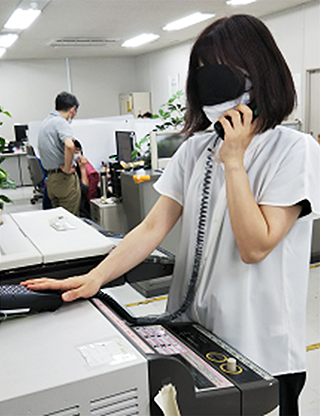
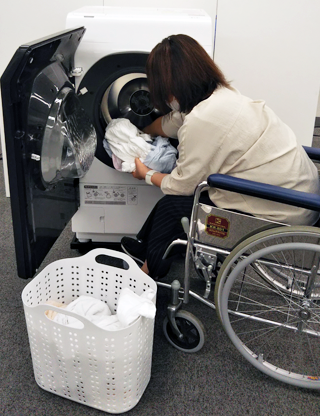
To continue the aforementioned activities company-wide, Sharp works to foster human resources through training. The training focuses on accessibility and universal design, and is conducted within a usability training system providing specialized education. Introduction to universal design (e-learning), which is mainly aimed at imparting understanding and acquisition of basic UD knowledge, has been completed by a cumulative total of approximately 6,500 employees (as of April 2025).
As well, to deepen understanding of the needs of disabled users, there is UD experience learning where employees see firsthand what it’s like to be physically disabled so that they can know how to make products more accessible, workshops where employees and disabled users discuss and brainstorm product accessibility ideas, and events on accessibility.
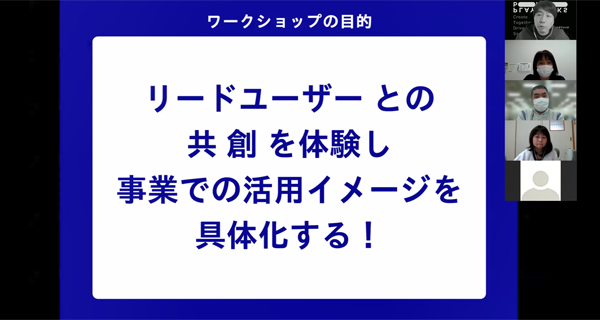
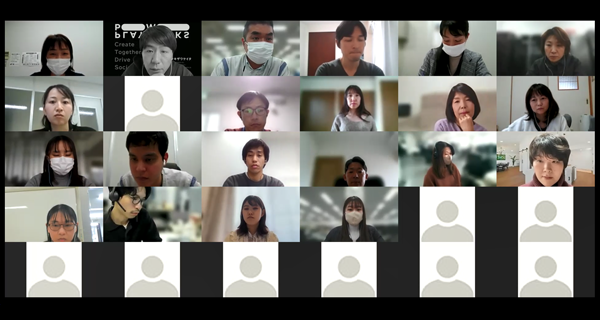
Comments from Participants in Workshops
- By communicating directly with people with disabilities, I was able to grasp in concrete terms issues that I had previously understood only vaguely. It was an invaluable learning experience. (Sharp engineering staff member)
- Visually impaired people are experts in their own world: that of the unseen. This makes me realize that by listening to the opinions of the vision-impaired, we can improve products not just for them but for everyone. (Sharp software development staff member)
Efforts to Ensure Accessibility
Accessibility is the concept of making products and services so that they can easily be used by people who are in some way limited in their physical functions; for example, senior citizens and the physically disabled.
Under U.S. federal law*1, federal agencies purchasing equipment and services are obligated to choose those that are accessible to everyone, regardless of restrictions. For Sharp digital MFPs and other products, assessment results of accessibility standards stipulated by federal law are compiled on a product evaluation sheet (VPAT*2), which is disclosed on the website of Sharp Electronics Corporation (SEC), Sharp’s U.S. sales company.
- Section 508 of the Rehabilitation Act.
- VPAT: Voluntary Product Accessibility Template. A table containing information regarding how a particular product or service conforms with Section 508 of the U.S. Rehabilitation Act.


Example of VPAT for a digital MFP
Sharp Corporation Wins Gold Prizes in 2024–2025 Kaden Awards (Japan)
A number of Sharp products were given a gold prize in the 2024–2025 Kaden (“home appliances”) Awards. The PK-18S01 Plasmacluster circulator won in the fan/circulator category, the CV-SH150 Plasmacluster clothing dehumidifier won in the dehumidifier category, and the HV-T75 Plasmacluster humidifier won in the humidifier/heater category.
In addition, four other products won a silver prize and two other products won a bronze prize, exceeding the results from last year.
In the Kaden Awards, now in their 10th year, winners are chosen from home appliances released that year based solely on votes by readers of the GetNavi and the Kaden Watch media outlets. Winners are recognized as “the best of the best” based on the high praise they garner from customers. For the Sharp products, readers gave high marks for things such as superb performance, ease of use, and ease of maintenance.
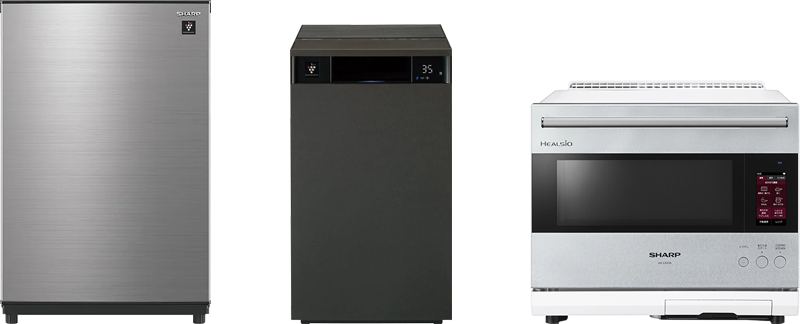
CV-SH150 Plasmacluster clothing dehumidifier, gold prize, dehumidifier category;
HV-T75 Plasmacluster humidifier, gold prize, humidifier/heater category